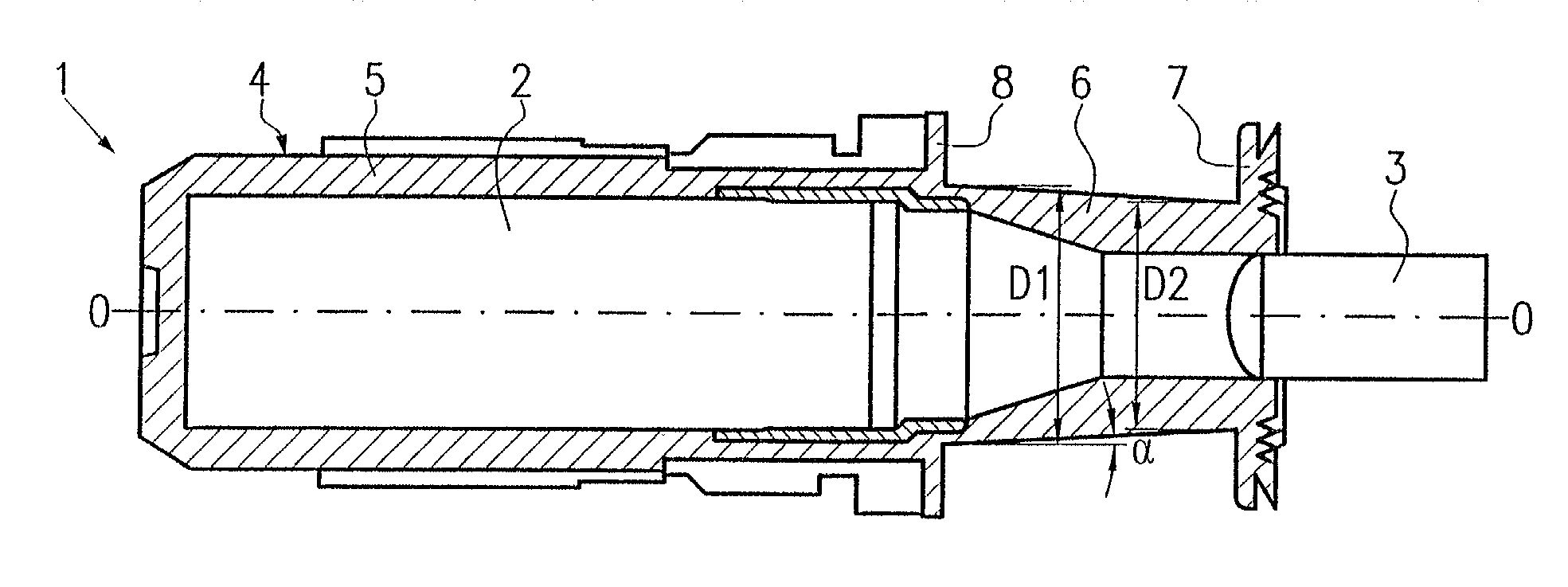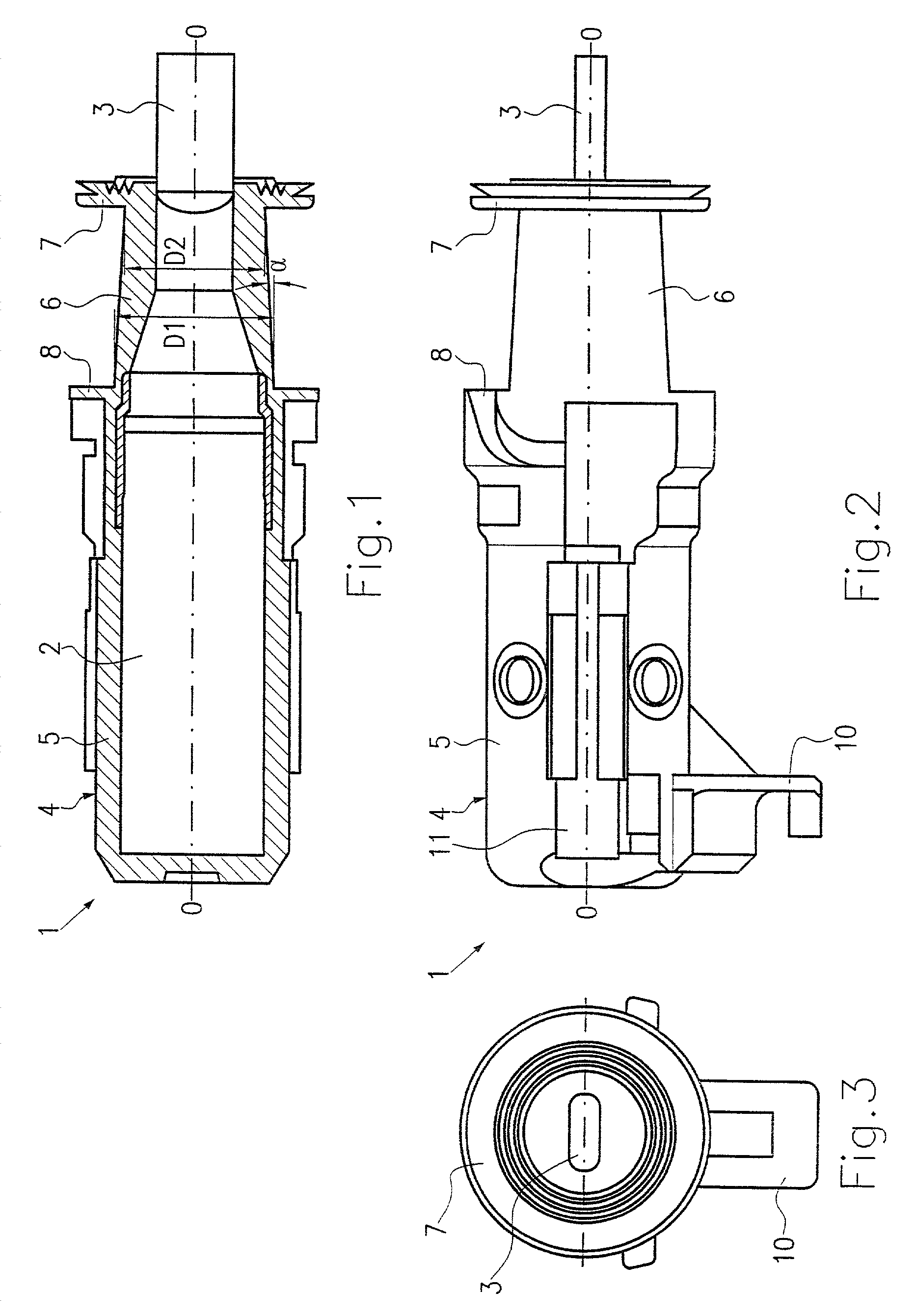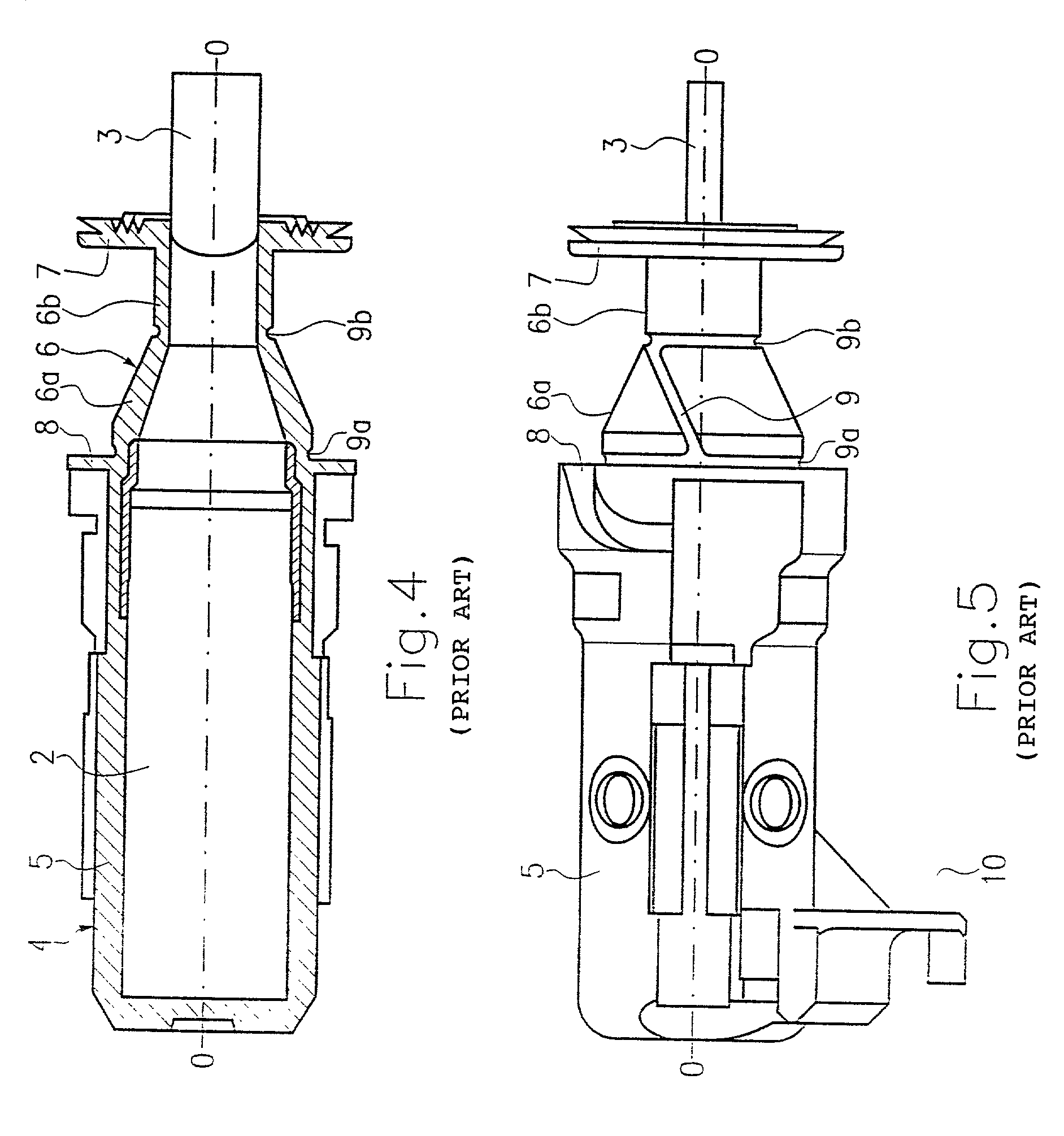Inductive sensor (speed sensor) with a conical coil base body
a technology of inductive sensor and conical coil, which is applied in the direction of linear/angular speed measurement, instruments, devices using electric/magnetic means, etc., can solve the problems of coil wire breakage, reduce the number of windings, increase the mechanical resistance of the wound coil, and reduce the winding time
- Summary
- Abstract
- Description
- Claims
- Application Information
AI Technical Summary
Benefits of technology
Problems solved by technology
Method used
Image
Examples
Embodiment Construction
[0020]An embodiment of an inductive sensor according to the present invention is shown in FIGS. 1 through 3. As shown in FIG. 1 in particular, the inductive sensor 1 comprises a magnet 2 produced out of AlNiCo with a pole pin 3 situated on one end.
[0021]The magnet 2 is completely surrounded by a housing 4 produced out of plastic, whereby the pole pin 3 projects out of the housing 4. The housing 4 is designed as a single part and comprises a main housing body 5 and a coil base body 6. Moreover, a first coil shield 7 and a second coil shield 8 are also designed as a single part with the housing 4. Polyamide PA6.12, for example, can be used as the material for the housing.
[0022]As shown in FIGS. 1 and 2, the coil base body 6 is situated between the first coil shield 7 and the second coil shield 8. The coil base body 6 is hereby designed in a slightly conical shape, whereby the larger diameter D1 of the cone of the coil base body 6 is situated at the second coil shield 8, and the smalle...
PUM
 Login to View More
Login to View More Abstract
Description
Claims
Application Information
 Login to View More
Login to View More - R&D
- Intellectual Property
- Life Sciences
- Materials
- Tech Scout
- Unparalleled Data Quality
- Higher Quality Content
- 60% Fewer Hallucinations
Browse by: Latest US Patents, China's latest patents, Technical Efficacy Thesaurus, Application Domain, Technology Topic, Popular Technical Reports.
© 2025 PatSnap. All rights reserved.Legal|Privacy policy|Modern Slavery Act Transparency Statement|Sitemap|About US| Contact US: help@patsnap.com



